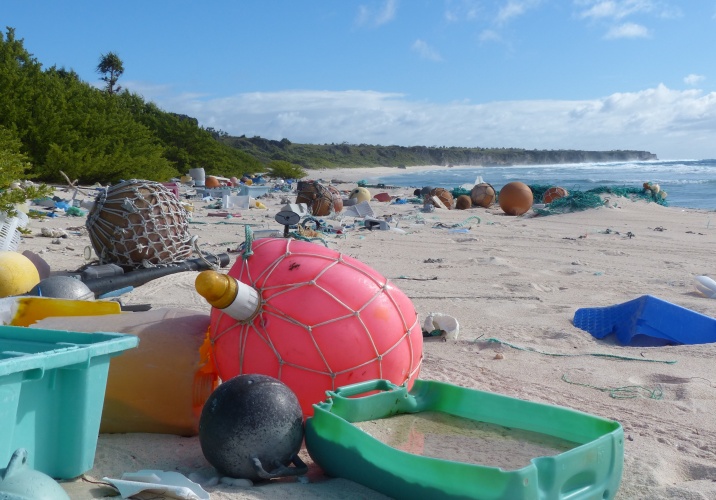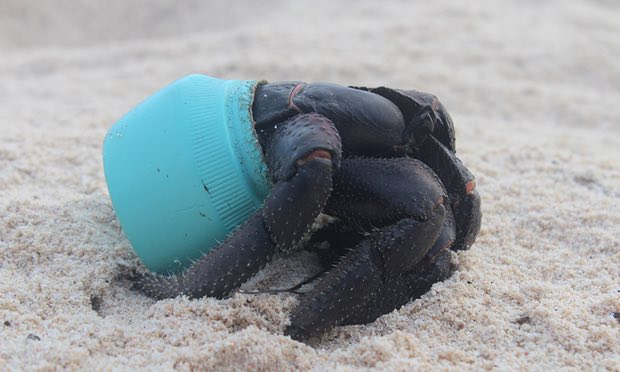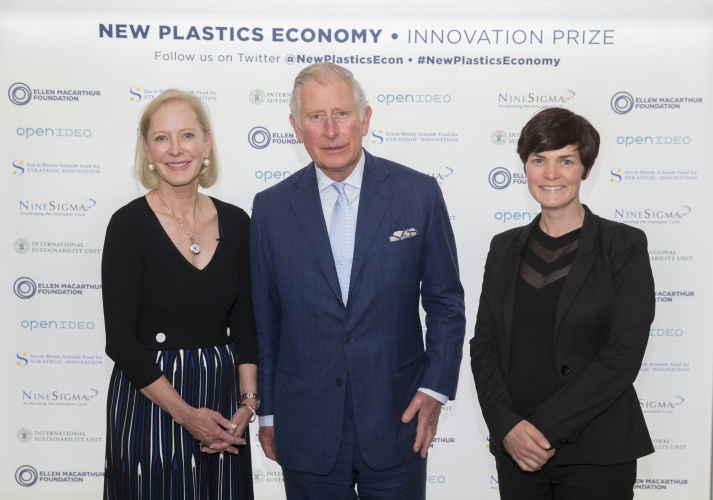 Andrew Wade, senior reporter
Andrew Wade, senior reporter
Anyone familiar with Channel 4’s ‘The Island with Bear Grylls’ will know that stranded participants sifting through plastic debris is a recurring theme. Left to fend for themselves for several weeks with only the most basic of tools, the islanders are often initially thankful for the random beachside trash, scavenging the garbage for things like flip-flops and fishing nets. But after a while, as wave after wave of detritus washes ashore, the scale of the oceans’ dark secret becomes apparent, and horror sets in.

East Beach, Henderson Island (Credit: Tara Proud)
Although the producers like to create the impression that the series is filmed in some far-flung Pacific region, it's actually just a few dozen miles off the coast from Panama City. Deeper into the vast ocean, the plastic problem is infinitely worse, as the Pacific’s circular currents funnel the debris into massive swirling ‘garbage patches’. Often mischaracterised as islands of floating trash, the patches instead feature high concentrations of plastic largely suspended just below the surface.
Henderson Island, part of the UK's Pitcairn Islands territory, lies near the centre of the Southern Pacific Gyre, one of the ocean vortexes where discarded plastic collects. As one of the most remote islands on the planet, and a UNESCO World Heritage site, you might expect Henderson to be an unspoilt paradise. But a study published this week revealed a very different picture. Researchers from the University of Tasmania’s Institute for Marine and Antarctic Studies (IMAS), working alongside the RSPB, found the island’s beaches littered with 671 pieces of plastic per square metre. Extrapolating from that, they estimate that the uninhabited Henderson, more than 5,000 miles from a major population centre, contains about 38 million pieces of plastic.
"What's happened on Henderson Island shows there's no escaping plastic pollution even in the most distant parts of our oceans," said IMAS researcher Dr Jennifer Lavers. "Based on our sampling at five sites we estimated that more than 17 tonnes of plastic debris has been deposited on the island, with more than 3570 new pieces of litter washing up each day on one beach alone.”
Several concepts have been put forward to address the issue of ocean plastics, most notably The Ocean Cleanup. Founded by Dutch aerospace engineering student Boyan Slat in 2013, the project aims to use 1-2km floating booms to corral debris floating near the surface of the Great Pacific Garbage Patch, in the northern part of the ocean. About once a month, support vessels would then remove the plastic from the points where it collects, transporting it back to shore for recycling. The first system is due to be launched at some point in 2018, and the foundation estimates that it will be able to remove about 50 per cent of the larger debris in the patch within five years of full deployment.

(Credit: Dr Jennifer Lavers)
The Ocean Cleanup has already secured significant backing from figures such as Salesforce CEO Mark Benioff, and libertarian venture capitalist (and Trump adviser) Peter Thiel. Founder Slat has also received numerous awards for his concept, from organisations ranging from the United Nations to the London Design Museum. However, the project is not without its critics. Over 90 per cent of ocean plastic is believed to be smaller than the microplastic the system is designed for, and will not be targeted by The Ocean Cleanup. Ultimately, the problem of plastics entering our oceans needs to be tackled upstream, and a new competition was announced this week to do just that.
The New Plastics Economy Innovation Prize is backed by the Ellen MacArthur Foundation and The Prince of Wales's International Sustainability Unit. It calls for an overhaul in the way we think about plastics and packaging, to move away from the ‘throwaway’ culture of single-use plastics to circular business models that make both economic and environmental sense. The prize is composed of two parallel components: a Circular Design Challenge and a Circular Materials Challenge. The former will ask participants to come up with ways to reduce plastic waste, particularly small-format packaging items such as sachets, straws and coffee cup lids. The latter will seek ways to make all plastic material recyclable, challenging people to develop novel materials that can replace the 13 per cent of today’s packaging (crisp packets and food wrappers) not fit for reuse.

Wendy Schmidt, Prince Charles and Ellen MacArthur (Credit: Ian Jones)
Each of the challenges is funded to the tune of $1m, with philanthropist Wendy Schmidt (wife of Alphabet executive chairman Eric Schmidt) stumping up the cash. Just as with climate change, tackling the plastics problem needs to become an economic imperative before meaningful action can be expected. Environmental arguments, as compelling and terrifying as they may be, inevitably become subservient to the financial interests so entrenched in our global structures. To counter that, we must design new systems and materials to discourage the apathy we currently see, where single-use plastics are consumed and disposed of without a second thought. It’s a gigantic problem that we all have to take responsibility for, and one which engineers have a key role in solving.








UK Enters ‘Golden Age of Nuclear’
Anybody know why it takes from 2025 to mid 2030's to build a factory-made SMR, by RR? Ten years... has there been no demonstrator either? Do RR...